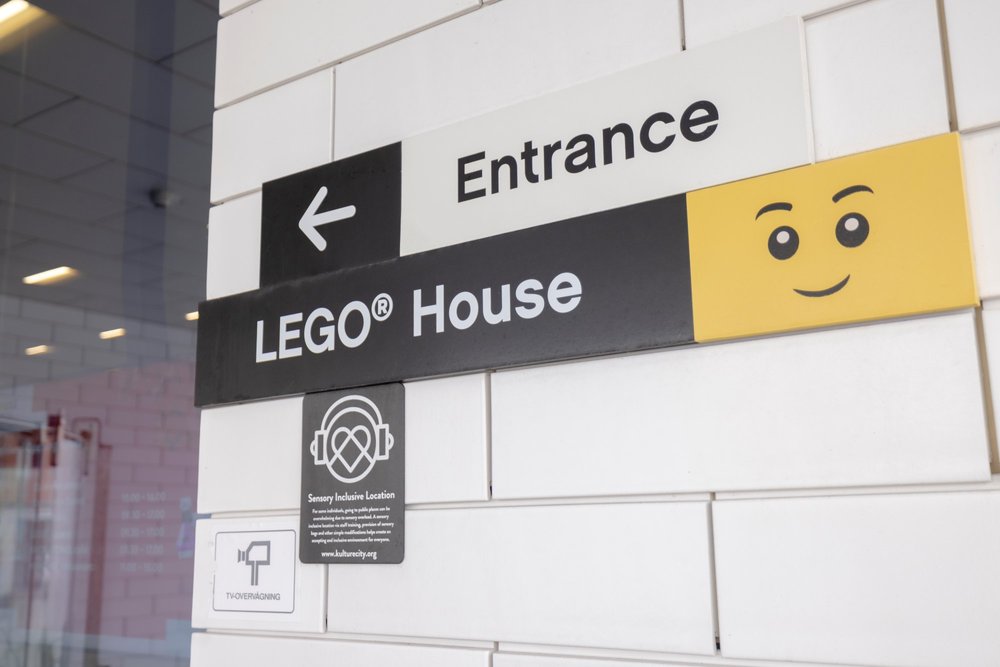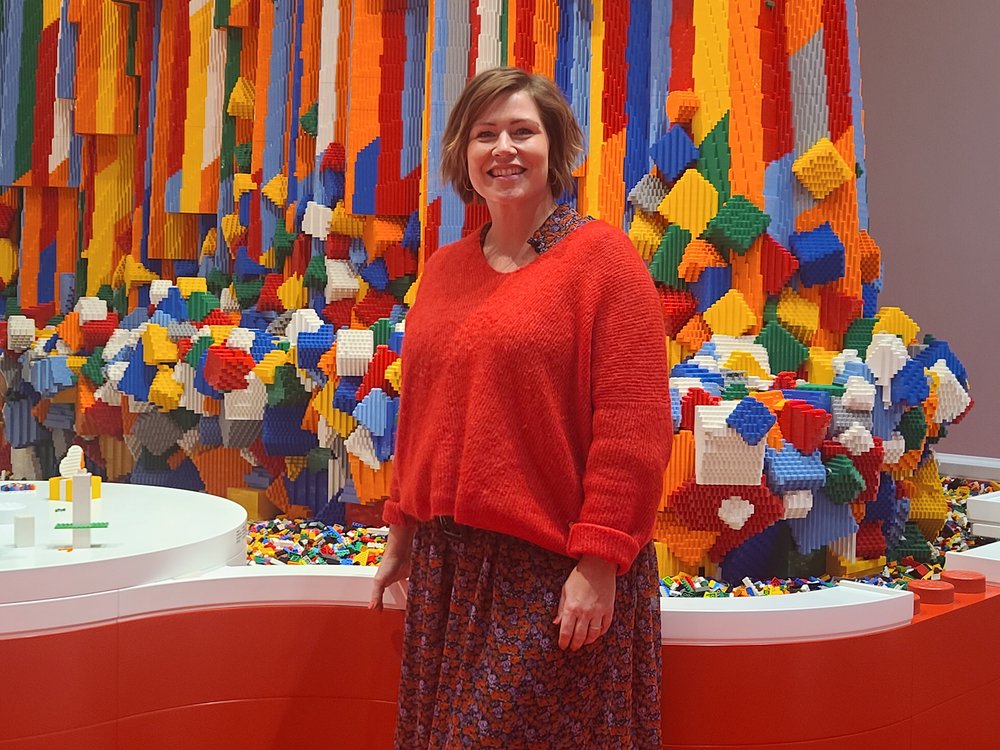Visible and Invisible: Inclusion and Accessibility at LEGO House
Being an AFOL (Adult Fan of LEGO), I love attending events especially tailored for us, particularly those held at the heart of LEGO in Billund at the LEGO House. Everyone’s love for the brick comes alive there, and The LEGO Group’s core values fill the environment with inspiration, passion, and play. I have been fortunate enough to attend six “AFOL Days” at the LEGO House around the time of Skaerbaek, and each occasion is as unique and special as the first.

As a neurodivergent individual, as much as I love these events, it is easy to be overwhelmed by the high level of sensory input. The staff at LEGO House are always so enthusiastic and knowledgeable, aiming to make the experience of learning through play a memorable and positive experience for everyone. So, to mark Global Accessibility Awareness Day, I wanted to share some of the things happening at LEGO House to be more inclusive and accessible.
Commitment to Inclusivity
BrickNerd was able to interview Vinnie Kuld Jensen, the new Diversity and Inclusion Lead at LEGO House, to discuss accessibility and support for guests with both visible and invisible disabilities.

Vinnie Kuld Jensen, the new Diversity and Inclusion Lead at LEGO House. Photo via Dave Schefcik
Hearing the genuine commitment from Vinnie and her team about creating a comfortable and supportive expereince for all was refreshing and comforting. Vinnie’s newly created role and the improvements she is leading highlights LEGO House’s dedication to continually improving to support equal opportunities for all, and reconsidering things that might work now, but maybe not work well for everyone.
Physical and Emotional Accessibility
LEGO House has implemented various strategies to support both visible and invisible disabilities. One such initiative is the Sunflower Lanyard program, which alerts staff that guests wearing these lanyards may need additional support, such as a quieter area for activities.

Photos via LEGO House
“The SunflowerLanyard initiative has greatly enhanced our ability to make experiences in the house not only physically accessible but also emotionally accessible. It helps us recognize guests with invisible disabilities,” says Jensen.


Sensory overload is a challenge I personally experience. I love all the colours and visual input in LEGO House—the sound of bricks being rummaged through is a happy sound for me! However, at times, all of that input, along with the sound of many people having fun with LEGO bricks, becomes amplified and overwhelms me. So I was really excited to hear about some current and new initiatives in LEGO House to specifically support emotional and sensory needs.
Quiet Spaces and Sensory Kits
LEGO House is working on creating more quiet spaces where guests can take a break from sensory overload. Existing areas between experience zones and outside spaces are being transformed into more comfortable quiet zones. Private rooms are also available for guests if someone is having some significant struggles and requires a higher level of space, quietness and privacy.
View fullsize
View fullsize

LEGO House has also recently introduced sensory kits that can be borrowed that include ear defenders and visual supports so that people can both express their feelings and their needs.
View fullsize
View fullsize

The cards include statements like “I need some quiet time” or “I need some time outside.” It really feels that LEGO House is showing a deep understanding of how sensory needs can impact a person, and that they are committed to making significant efforts to embrace and support them.
View fullsize
View fullsize

View fullsize

Rebuilding with Inclusivity in Mind

LEGO House is continuously striving to improve accessibility. Vinnie noted, “Inclusivity and accessibility are embedded in our DNA. When I joined in the middle of this year, my purpose was to build on our already strong foundation in these areas.” This commitment includes listening to guest feedback and making necessary adjustments.
Recent updates include enhancing physical spaces with more accessible features, such as handrails on both sides of the iconic staircase (and at a child’s height) as well as visual markings for stairs and steps for those with mobility difficulties. These improvements should be invisible to those who don’t need them, but are greatly appreciated by those who do.
Additionally, the History Collection exhibit in the basement has been redesigned with accessibility in mind, now featuring tactile activities, Braille, and sign language to ensure inclusivity. This makes the information even more approachable to a wider audience.
View fullsize
View fullsize

The LEGO House website was also updated with accessibility in mind, with information to prepare guests for their visit by letting them know what to expect and detailing the support offered to people with additional needs.
Inclusive Employment and Awareness Training
In order to fully support inclusion, I want to highlight the staff at LEGO House as well. The Play Agents there are so full of passion to create learning opportunities through play. In the interview, I learned that all employees in LEGO House receive training from KultureCity, an organisation that seeks to create sensory accessibility and inclusion for those with invisible disabilities. They also help provide the sensory kits.

Photo via LEGO House
LEGO House’s commitment to inclusivity also extends to its employment practices. They run programs that offer neurodivergent individuals the opportunity to test their abilities in a supportive work environment, leading to meaningful employment opportunities. “We've had some wonderful stories where participants found their place here, applied for positions, and successfully landed jobs with us,” says Jensen.

Photo via Dave Schefcik
It is refreshing that LEGO House practices what it preaches and ensures that it also supports its own staff to have positive experiences. I was happy to hear that some staff members in the house wear sunflower lanyards as well, which enables guests to identify with them.
Why Inclusivity and Accessibility Matter

Photo via Dave Schefcik
Looking ahead, LEGO House has several exciting updates planned to further enhance accessibility. “We have many more initiatives planned for next year. Some are definite, while others will be experimental as we learn and understand more together with our guests,” says Jensen. These initiatives will hopefully continue to push the boundaries of inclusivity and set new standards in accessibility.
To me, inclusivity and accessibility are not just about compliance—it’s about creating environments where everyone feels valued and can participate fully. At LEGO House, this means ensuring that every visitor, regardless of their physical or cognitive abilities, from kids to AFOLs to the staff themselves, can enjoy the full range of experiences available.

Photo via LEGO House
To finish this article, I’d like to end with these words from our interview that I think sums up everything that LEGO House is doing. “Inclusivity is about providing equal opportunities for all guests to enjoy and learn through play. It’s about breaking down barriers and making sure that everyone can feel welcomed and included,” says Jensen. “Accessibility is not up for discussion, everyone should have equal opportunities.”
What do you think of the accessibility updates at LEGO House? Let us know in the comments below.
Do you want to help BrickNerd continue publishing articles like this one? Become a top patron like Charlie Stephens, Marc & Liz Puleo, Paige Mueller, Rob Klingberg from Brickstuff, John & Joshua Hanlon from Beyond the Brick, Megan Lum, Andy Price, Lukas Kurth from StoneWars, Wayne Tyler, Monica Innis, Dan Church, and Roxanne Baxter to show your support, get early access, exclusive swag and more.

